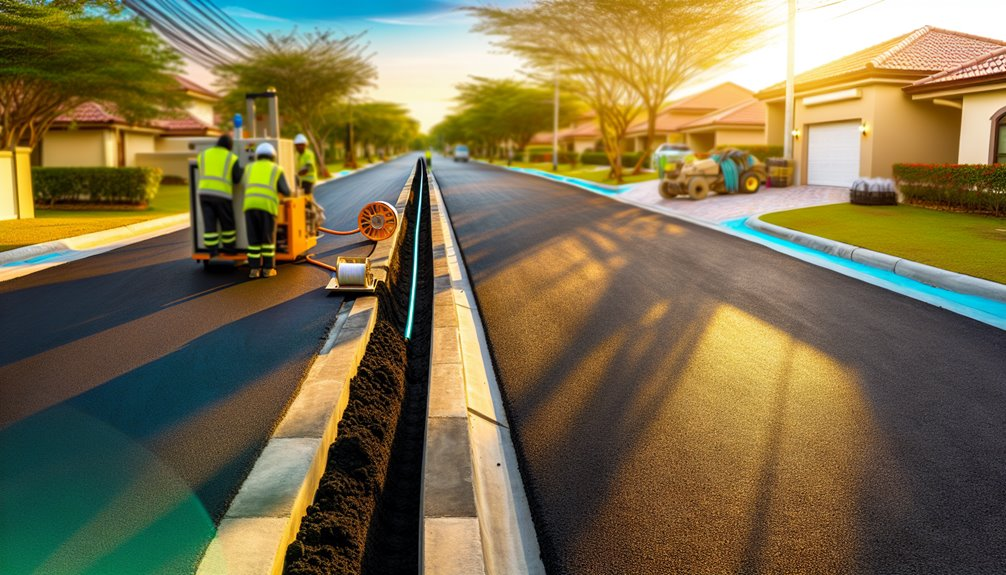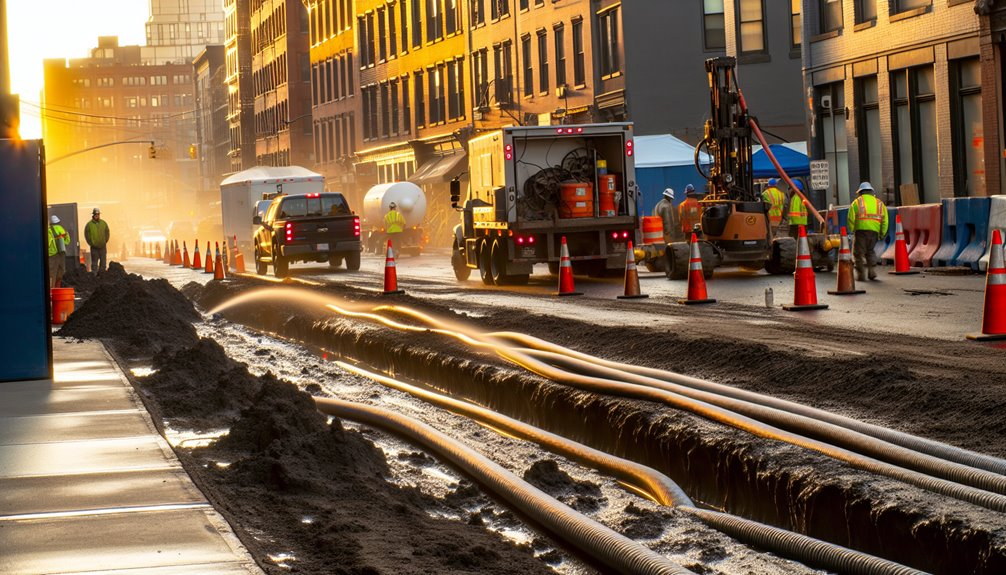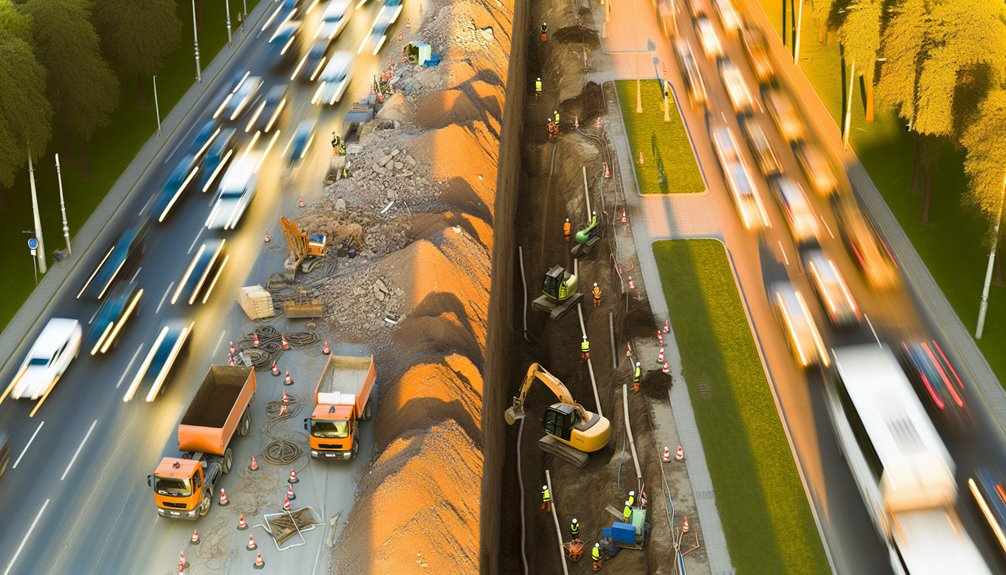You can install fiber with minimal surface change when you plan routes with GIS, coordinate permits, and sequence work to standards. You locate and daylight utilities before any cut. You specify microtrench or slot-trench widths, controlled saw depth, and vacuum extraction to limit dust and noise while maintaining traffic. You backfill with thin-lift, verified compaction and match surfacing mixes, joints, and texture. You document every step for audits—yet one overlooked factor can still undermine durability.
Planning Routes With Precision: GIS, Permitting, and Stakeholder Coordination
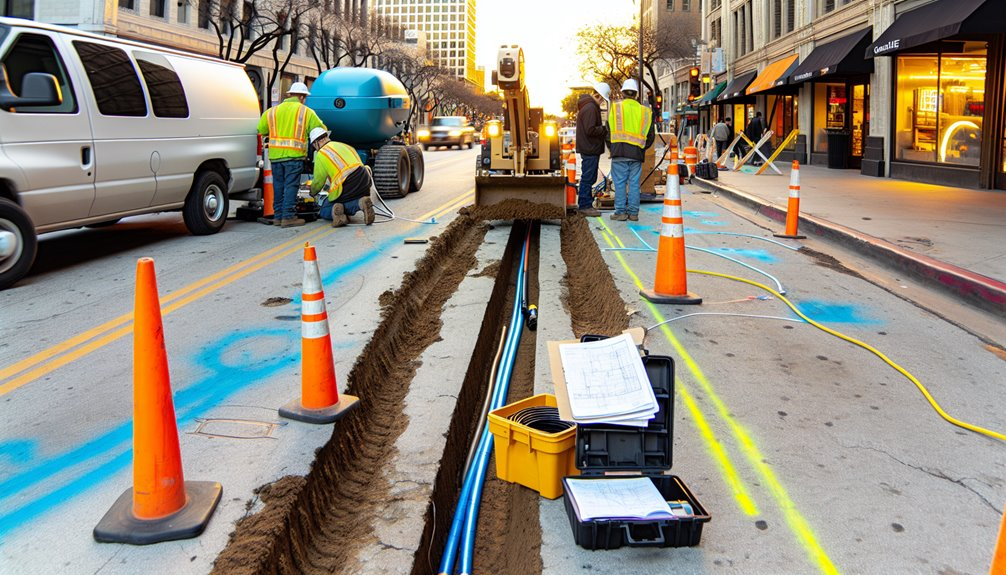
Before you break ground, you define an end-to-end route using GIS to optimize alignment, avoid conflicts, and meet regulatory constraints. You confirm GIS accuracy with current parcel, right-of-way, and transportation layers, then lock geometry to a shared baseline so engineering, construction, and operations work from one source of truth. You stage segments by jurisdiction to align design submittals with permitting timelines, mapping dependencies to avoid idle crews and liquidated damages.
You coordinate with municipalities, DOTs, and corridor owners early, aligning trench sections to standards for clearances, cover depth, restoration, and traffic control. You select low-impact alignments near existing corridors to minimize surface change and expedite approvals. You document constraints, approvals, and deviations, maintaining traceability that supports audits, change orders, and future maintenance.
Utility Locating and Risk Mitigation Before the First Cut
Even with a locked route, you verify the subsurface with a disciplined utility locate program that meets 811, ASCE 38-22, and local franchise requirements. You schedule tickets, hold pre-mark meetings, and reconcile records to field truth.
You combine electromagnetic locating with Ground penetrating radar to resolve congested corridors, variable soils, and non-conductive plant. You document quality levels (QL-D to QL-A), escalating to test holes where conflict risk persists. You apply Utility marking standards for color, offset, and stationing, tying marks to survey control and GIS.
You mitigate strikes by setting tolerance zones, mandating daylighting at crossings, and enforcing tool restrictions near live facilities. You brief crews on isolation distances, shutoff contacts, and emergency procedures. You capture as-built data continuously, closing the loop for everyone on the corridor team.
Narrow-Cut Methods: Microtrenching, Slot Trenching, and Keyhole Techniques
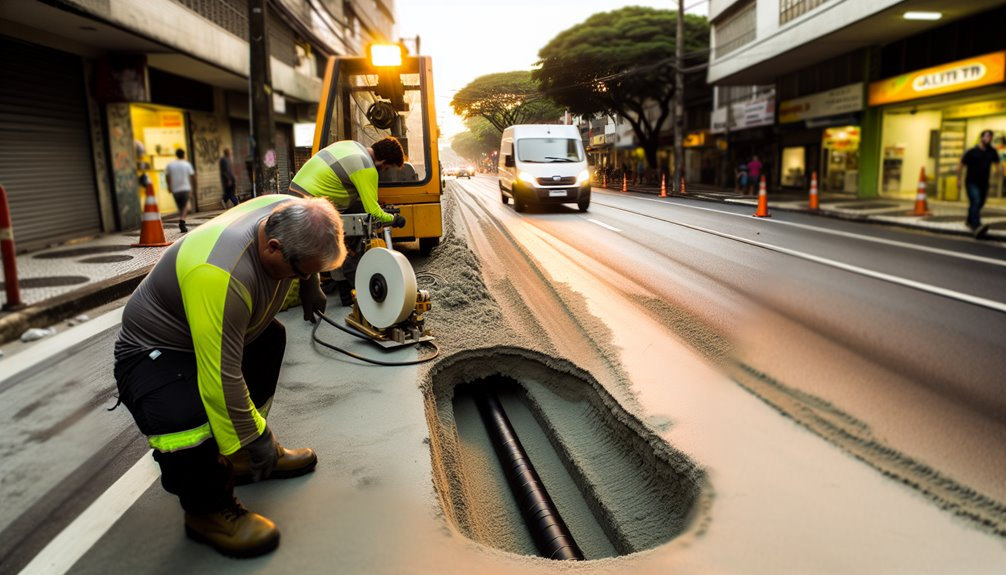
Validated locates and risk controls set the stage for narrow-cut installation methods that place fiber with minimal pavement disturbance and rapid restoration.
You’ll select among microtrenching, slot trenching, and keyhole techniques based on pavement type, conduit size, and load class.
Specify precision depthing with calibrated saw carriages and verified blade stack-ups to maintain tolerances.
For microtrenching, define kerf width and geometry, enforce microcut cooling to prevent binder glazing, and require slurry containment.
Use slot trenching when you need slightly larger conduits or multiple ducts; align cuts to joint patterns and maintain edge-stability factors.
Apply keyhole methods for point repairs or lateral tie-ins, coring and reinstating with structural backfill and bonded caps.
Document as-built elevations, compaction results, and pull-tape proofing before turnover.
Dust, Noise, and Traffic Control With Saws, Vacuum Extraction, and Phased Work Zones
Across urban corridors and arterial roads, you’ll mitigate dust, noise, and traffic impacts by integrating engineered controls with your saw and vacuum operations and by sequencing phased work zones. Specify wet-cutting flow rates, shroud design, and capture efficiency; pair high-CFM, HEPA-rated vacuum extraction with real-time particulate monitoring to meet municipal thresholds. Plan saw blade maintenance to reduce vibration, chatter, and noise at source, and verify RPM-to-diameter ratios per manufacturer standards.
Phase work in short, controllable segments: advance-cut, extract, haul-out, then immediately secure edges. Use off-peak windows, flagging, and temporary channelization per MUTCD; keep pedestrian access continuous. Publish traffic control plans and shift notices through community outreach to align expectations. Log noise dosimetry, dust readings, and complaints; adapt controls within your change-management process.
Restoration That Blends In: Backfill Materials, Sealants, and QA for Long-Term Performance
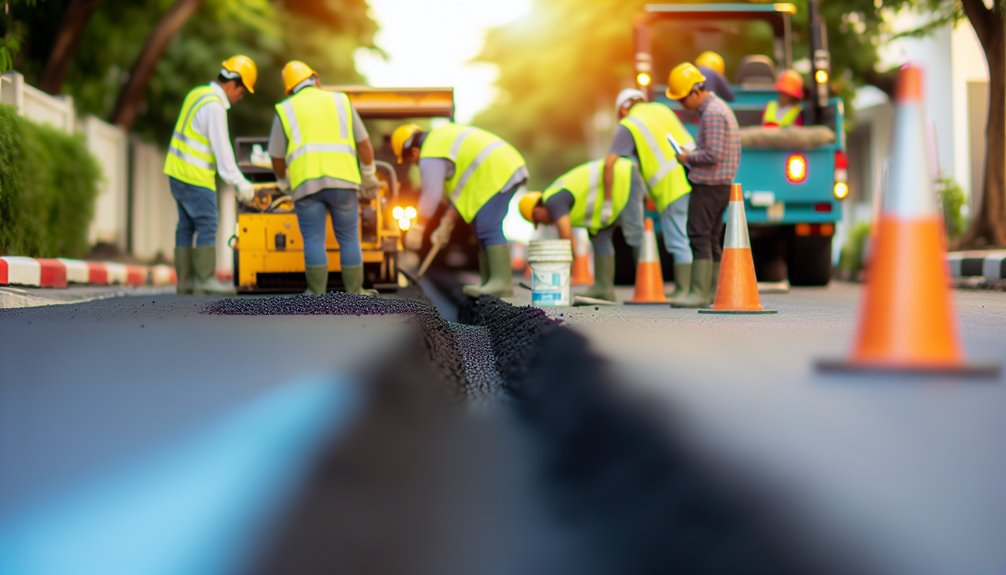
Marrying structural performance with streetscape continuity starts with specifying backfill, compaction, joint treatments, and surface restoration to the same—or stricter—standards as the host corridor.
You select graded, non-plastic backfill and place in thin lifts, verifying density with compaction testing (e.g., nuclear gauge or dynamic cone).
You proof-roll and confirm modulus before paving.
At joints, you cut square, bond with tack or epoxy per substrate, and validate sealant compatibility with adjacent asphalt, PCC, and coatings.
You finish with a matched mix design, controlling aggregate gradation for consistent surface texture.
For concrete, align paste content and curing; for asphalt, hit target voids and temperature windows.
Close out with color matching, rideability checks, permeability testing, and documented QA so the restoration reads as original.
Conclusion
At Boring Bros, we take pride in delivering telecom trenching that protects the surface and meets the highest standards. By using GIS-based routing, exact utility locating, and the right permits, we only cut where necessary—favoring microtrench, slot, or keyhole methods to keep disruptions to a minimum. We control dust and noise with saws and vacuum extraction, phase traffic safely, and restore everything with engineered backfill, verified compaction, matched mixes, square joints, and complete QA records. The result is invisible infrastructure, durable pavements, and auditable performance you can trust. I’d love to tell you more—visit boringbro.com or give us a call at (954) 639-6167.

